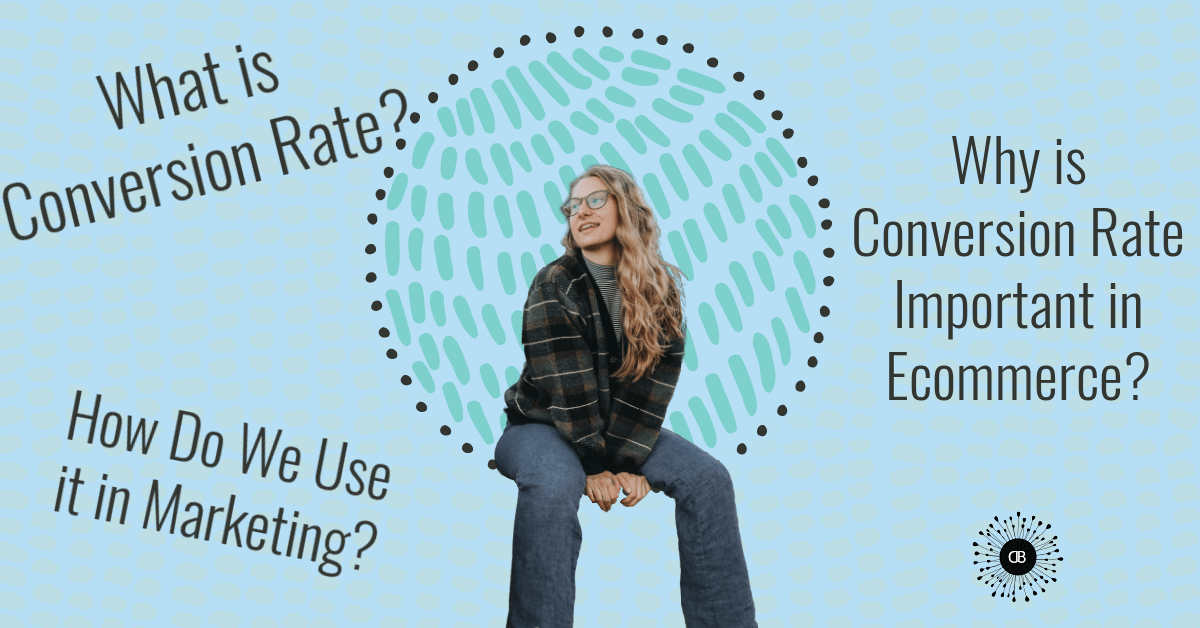One of the first questions we ask when we onboard a new client or speak with a brand owner working in ecommerce is, “What is your conversion rate?”
This is because an ecommerce brand’s conversion rate is the best starting place for diagnosing issues, optimizing for sales, and testing viability of products.
In this article, I’ll define “conversion rate” as it relates to any brand selling products and services online, along with sharing how we use it for the brands we work with.
What is Conversion in Business?
This is probably something you already know, but when it comes to business the term “conversion” can mean two different things:
1 – to change something into something else – like converting an email subscriber to a purchaser.
2 – to complete a defined goal – like getting a sale.
Conversion offers quantifiable pieces of information that gives you insight into a target and helps you make big picture decisions. Typically in business, when we talk about conversion, we’re talking specifically about sales.
and because raw numbers don’t always offer clarity when it comes to sales, we work with conversion rate, which is represented in a percentage.
(# of orders / # of visitors)*100
Note: make sure that you use the same timeline for orders and visitors for calculation.
Why is Conversion Rate Important in Ecommerce?
Knowing your conversion is important because it gives you insight into how well you are completing your goals. It helps you set priorities and figure out where things are doing well, and where things are lacking. You can set relevant KPIs for growth and (my personal favorite) see what you should stop doing because something just doesn’t work.
Note here that using conversion rate is important because a raw number can fool you. For example, if you have 100 sales you would be really excited, but 100 is just a number. It doesn’t indicate anything about how well your site is optimized for your ideal audience.
How to Start Utilizing it in Business
Using the conversion rate helps set you on the path to make better business decisions. Here’s two scenarios with that same 100 sales we started with. You might be surprised to learn that there are two different paths to follow!
Example 1: A lower conversion rate
Let’s say that you learn 10,000 people have visited your store. Now, when you calculate your conversion rate: ( [100 / 10,000] * 100) you’ll see that the conversion rate is 1%.
This isn’t abnormal, but we like to start with a 2% baseline for most folks that are selling online. So that does give you a clue that it is time to look into optimizing your website for your audience. 10,000 people is a lot, especially if it’s organic (note that if you’re running ads, it could also be an audience issue), so this is great indication that there’s something not quite connecting on your website for your visitors. Time to do a little sleuthing to see when people tend to leave your website.
Example 2: A high conversion rate
Now, let’s say that 2500 people saw your website. When you calculate your conversion rate at this level: ( [100 / 2500] * 100) you’ll find that the conversion rate is 4%.
That’s very high for an ecommerce conversion rate, so we would suggest branching out and focusing on driving more traffic. You may be only speaking to a hyper-niche. They’re likely to be loyal, which is great, but it’s time to branch out a little more. We usually suggest starting to make content that’s directly adjacent to the hyper-niche and/or to start connecting with other businesses that have overlapping audiences. Both of these increase traffic and then you’ll get a better picture of your conversion rate.
A lot of brands start at example 2 and then migrate up to example 1. Don’t expect your brand’s conversion to be static. Keep an eye on it. And if you ever want help diagnosing what you should be optimizing for, check out this article for the super helpful infographic!
Conversion in the Broader Picture
In the broader view of business, your conversion rate is your bottom line, your source power, your ability to continue pushing forward. It’s easy to think of it in terms of visitors to sales, but every customer has a journey. Understanding the journey will take you really far in the ability to get the sales conversion.
To improve a conversion rate for a business, you’ve got to completely understand their user AND the user’s experience because for every sale a brand makes, it’s actually converting:
- Scrollers into lurkers
- Lurkers into likes
- Likes into browsers
- Browsers into subscribers
- Subscribers into buyers
Each individual transformation is a step towards a sale. When you break it down into steps, and look at how each of these initiatives converts separately, you’ll be able to see where the weak links or missteps are in your pipeline. That way, you’ll know what to fix so your conversion funnel works better than ever.
Do you focus on conversion rate? Tell us in the comments below.
Photo by Suzanne D. Williams on Unsplash
Answer the public




